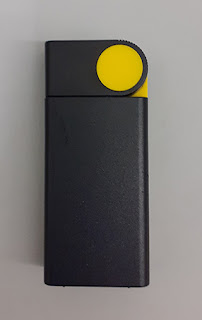Rowlands was one of the first trained industrial designers to work with plastics in Britain, having attended an industrial design course at the Central School of Arts and Deign in Holburn at the end of the Second World War. He was especially interest in plastics technology and initially worked at Bakelite Ltd and then set up the plastics design office for EKCO in the 1950s.
He tended to work through the development of models rather than by making drawings. His designs are noteworthy for their smooth, clean lines and their practicality. He was among the first designers to make the most of the relatively new injection moulding process.
 |
Martyn Rowlands with Trimphone, cutlery and cat. Image credit - Institution of Engineering and Technology Archives |
In 2002, Rowlands became an Honorary Fellow of the Arts University
Bournemouth. Around this time, he also
donated a large number of objects from his private collection all of which can
be found on our website. We have featured his work in our first Spotlight on exhibition.
Some of Rowlands notable designs include:
 |
| Super bath, 1955. https://www.modip.ac.uk/artefact/aibdc-003807 |
 |
| Trimphone, 1966. https://www.modip.ac.uk/artefact/aibdc-003366 |
 |
| Series 500 taps, 1967. https://www.modip.ac.uk/artefact/aibdc-0033671 |
The Spinhaler designed for Fisons is
featured, along with a number of other MoDiP objects, in the Museum of Plastic
2121 project which is an imagined museum built to teach future generations about
plastics and tell the story of how activism started in 2021 led to the positive
change that resulted in us cleaning up our oceans and forever changing our
relationship with plastic.
 |
| Spinhaler, 1967. https://www.modip.ac.uk/artefact/aibdc-0034152 |
Louise Dennis
Curator of MoDiP










